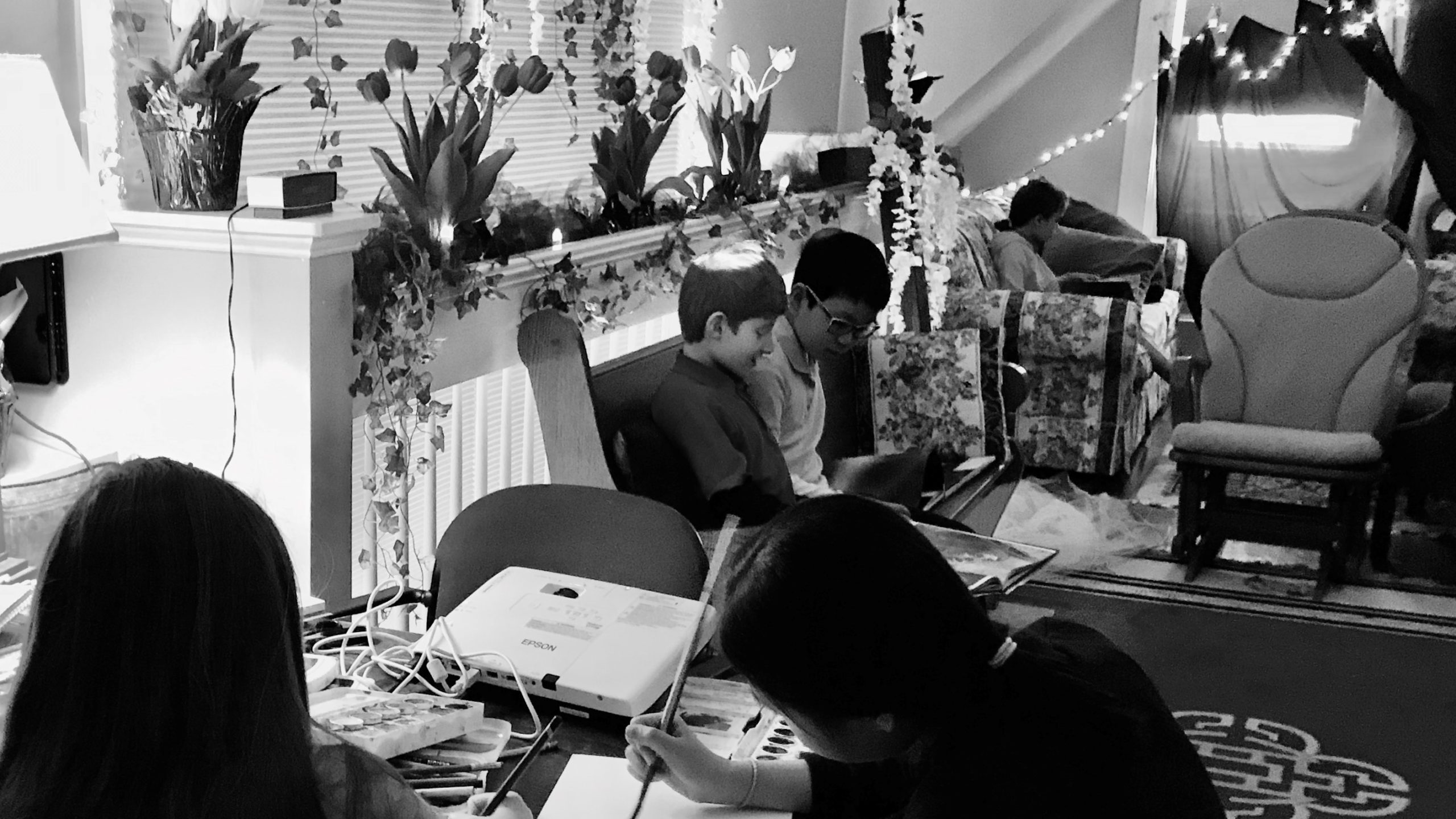We live in a noisy world that seems determined to capture the attention and hearts of children. Noise is ubiquitous! Canned music in stores and on elevators, television at the airport or in restaurants or the doctor’s office, leaf blowers, traffic, siblings, dogs, and on and on. . . . Quiet is a rare experience in our culture, and it is an important element in hearing God’s voice. One of the greatest gifts we can give children is a quiet space to spend time in and respond to God’s presence. The Sacred Space, sacred because it is intentionally set apart for God, is an oasis of stillness and peace. In a school setting, the space could be a classroom, a breakout room, an office, or a part of a church sanctuary—any space that could be dedicated to this purpose for a designated amount of time.
Setting up the Space
Pray over the space, dedicating it to God and asking the Holy Spirit to hover over it and minister to each one who comes. In our space at New Covenant School, we use black cloth to close off the balcony in the sanctuary of the building where we meet. The space should be as beautiful and welcoming as your imagination and resources allow. We use white Christmas lights, artificial candles, and other dim lighting. Comfortable chairs and a rug with pillows invite the students to rest. Objects from nature such as shells, special rocks, plants, and flowers also give warmth and beauty. A harsh space can be softened with lovely fabric draped or hung. Instrumental worship music softly playing creates a peaceful atmosphere.
We make sure there are art supplies available: watercolors, colored pencils, crayons, and paper. For the younger children we often have modeling clay. Students are invited to respond artistically to God’s presence, and their artwork is hung in the space. There is a prayer journal to record prayers, insights, or Scripture for others to read. One of the most powerful aspects for the children, one they make sure is present every time, is a wooden cross with nails in it. They are invited to write a prayer, a fear, or a burden on a piece of paper, fold it, and press it into one of the nails on the cross. They then take a small stone from a basket to remind them that they have left their burden with Jesus. Other important items are Bible, picture Bibles for younger children, and art books with illustrations of scenes from the Bible. Prayer requests can be written and posted in the sacred space so that all who spend time there have the opportunity to pray for the requests.
Preparing the Students
At a chapel before the Sacred Space begins, we’ll talk about a quiet space they have in their own lives and what those spaces mean to them. We’ll also talk about how important it is to have quiet places in order to hear the “still, small voice” of God. The only rule we have for them in the Sacred Space is that they may not talk. Otherwise they are completely free to engage in any of the activities listed above.
In our lunchroom, we hang a sign-up poster listing the days and times for the Sacred Space. Teachers can sign up for a time slot to bring their class, and older students may sign up to go alone or with a friend, with the permission of their teacher. Teachers see this as a priority and gladly release their students for it. Parents are also welcome, and the time slots can extend before and after school.
Joanna Levy is principal of New Covenant School in Arlington, Massachusetts, where she also taught a 3rd/4th grade class for fifteen years. During her time as a class teacher she was named “Volunteer of the Year” by the Massachusetts Assisted Living Association for a biography project she did with her class called “Writing the Lives of the Elderly.” She supports teachers in designing engaging curricula that serve an authentic audience, meet state standards, and foster discipleship in the students. Joanna is passionate about helping educators create a culture in their schools in which students are deeply involved in their own spiritual growth.
.
